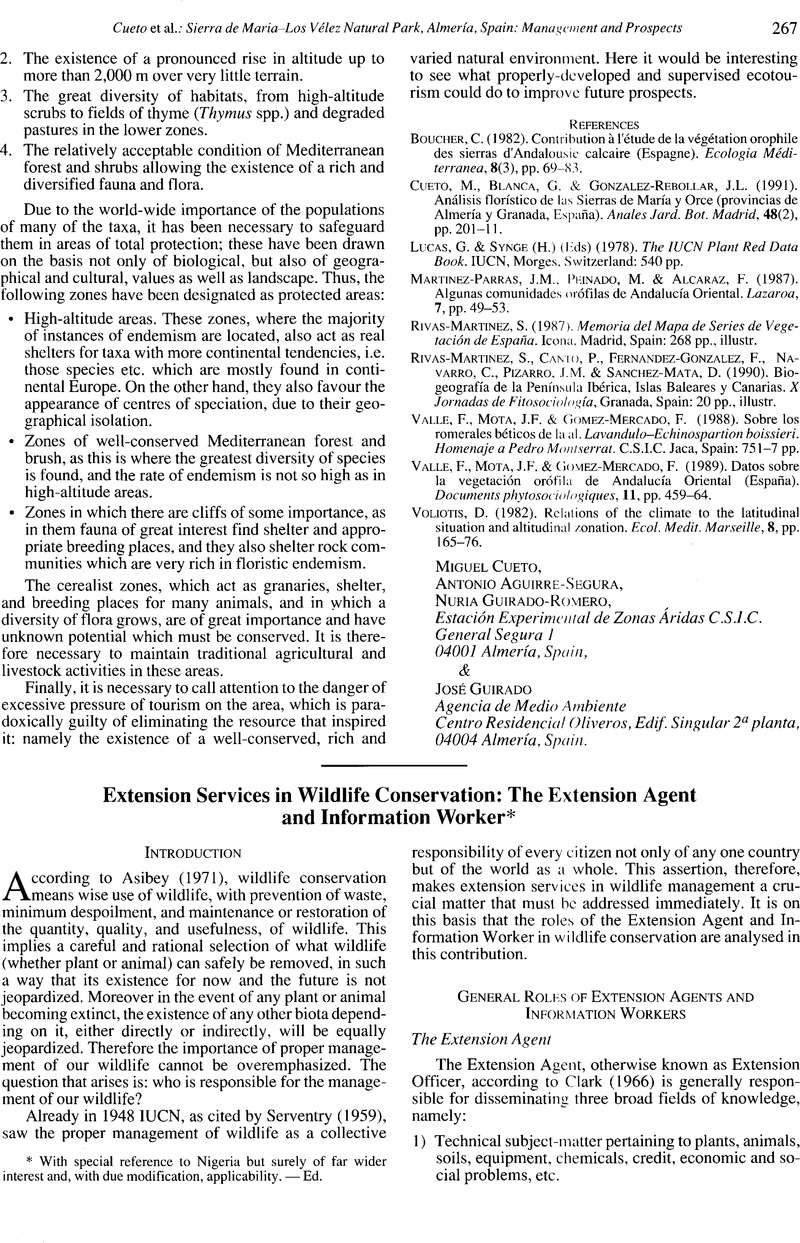No CrossRef data available.
Article contents
Extension Services in Wildlife Conservation: The Extension Agent and Information Worker*
Published online by Cambridge University Press: 24 August 2009
Abstract
An abstract is not available for this content so a preview has been provided. Please use the Get access link above for information on how to access this content.

- Type
- Short Communications & Reports
- Information
- Copyright
- Copyright © Foundation for Environmental Conservation 1995
References
Asibey, E.O.A. (1971). The present status of wildlife conservation in Ghana. Wildlife Conservation in West Africa, 22, pp. 15–21.Google Scholar
Clark, R.C. (1966). Agricultural extension as a profession. Nigerian Agricultural Journal, 3(2), [not available for checking].Google Scholar
Patel, A.U. (1973). Communication channels and their impact on knowledge of farmers of South Western Nigeria. India Journal of Extension Education, 14(1), pp. 3–4.Google Scholar
Rosevear, D.R. (1959). The position of wildlife preservation in West Africa. Oryx, Vol. V, Nr 1, pp. 25–6.CrossRefGoogle Scholar
Serventry, V.N. (1959). The requirements of conservation programme. Oryx, Vol. IV, Nr 3, pp. 199–201.Google Scholar
Williams, S.K.T. (1981). The Agricultural Extension Information Worker: His Methods and Materials. A paper read at FID/ET Technical meeting, Lagos, Nigeria, 22 pp. (typescr.).Google Scholar




